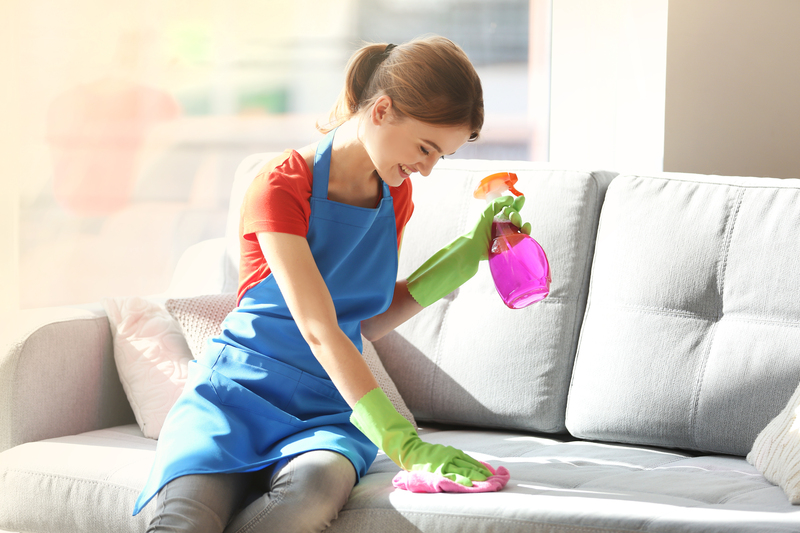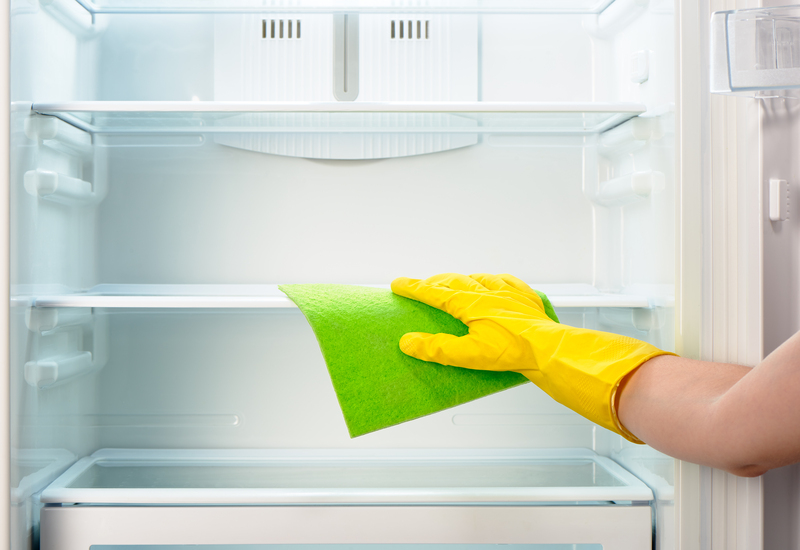How to Maintain a Home that is Both Dust-Free and Allergen-Reduced
Posted on 10/06/2025
How to Maintain a Home that is Both Dust-Free and Allergen-Reduced
Maintaining a dust-free and allergen-reduced home goes far beyond a shiny surface--it boosts your indoor air quality, eases allergy symptoms, and creates a more comfortable and inviting living space. In this comprehensive guide, discover expert tips, actionable strategies, and essential knowledge to help you achieve and sustain a house that minimizes dust and allergens at source.
Understanding Dust and Allergens in Your Home
Before you can effectively reduce dust and allergens in your home, it's important to understand their sources and how they impact your living space.
What Makes Up Household Dust?
- Skin particles and pet dander: Human and animal skin cells naturally shed, becoming a primary component.
- Textile fibers: From clothing, bedding, and upholstery, these break down over time.
- Pollen, mold spores, and dust mites: These are transported indoors via windows, doors, or on clothing.
- Soil and outdoor debris: Brought in from shoes and pets.
Common Indoor Allergens
- Pet dander: Proteins from skin, saliva, and urine of pets.
- Dust mites: Microscopic creatures thriving in-soft furnishings.
- Mold spores: Fungi that proliferate in moist areas.
- Pollen: Can accumulate inside even if windows remain closed.
Understanding what you're up against is the first step toward effectively maintaining a dust-minimized and allergen-reduced environment at home.

Why Keeping a Dust-Free and Allergen-Reduced Home Matters
Dust and allergens can negatively affect respiratory health, especially for those with allergies, asthma, or other respiratory issues. By reducing household dust and allergen loads, you can:
- *Improve sleep quality*
- Reduce allergy and asthma attacks
- Promote overall well-being
- Boost energy levels
- Maintain a cleaner, more attractive living space
Key Strategies for a Dust-Free, Allergen-Reduced Home
Building a cleaner, more health-conscious home begins with daily habits and regular deep-cleaning. Below are comprehensive steps to help you achieve and maintain your goals.
1. Focus on High-Traffic Zones
- Entryways: Use doormats outside and inside each entrance, and remove shoes before entering.
- Living rooms: Vacuum upholstered furniture weekly and rotate cushions regularly.
- Bedrooms: Wash linens frequently and encase mattresses and pillows in allergen-proof covers.
2. Implement an Effective Cleaning Routine
- Dust from top to bottom: Always clean high surfaces (ceiling fans, shelves, curtains) first so dust falls to the floor, which you'll clean last.
- Damp dusting: Use a slightly damp microfiber cloth, which captures dust instead of scattering it.
- Vacuum properly: Use a vacuum with a HEPA filter, which traps dust and allergens efficiently.
- Mop floors regularly: Especially if you have hardwood, tile, or laminate--use a mop and non-toxic cleaner for optimal results.
3. Optimize Ventilation and Air Filtration
- Change HVAC and air purifier filters regularly: Dirty filters recirculate dust and allergens through your home, so check every 1-2 months.
- Invest in a quality air purifier: Models with HEPA filtration remove up to 99.97% of airborne particles, including allergens and dust.
- Ventilate: Open windows on clear, low-pollen days and use exhaust fans in the kitchen and bathroom.
4. Control Humidity Levels
- Keep humidity between 30-50%: Lower humidity deters dust mites and mold growth. Use a dehumidifier if necessary.
- Avoid overwatering houseplants: Excess moisture can foster mold and dust accumulation in soil and leaves.
- Fix leaks immediately: Promptly address any signs of dampness or water intrusion.
5. Choose Furnishings and Decor Wisely
- Opt for hard flooring: Carpets trap and hold dust, while hardwood, tile, or laminate are easier to clean.
- Pick washable rugs and curtains: Launder monthly if possible.
- Minimize clutter: Fewer items on shelves and surfaces mean fewer places for dust to accumulate.
6. Reduce Pet-Related Allergens
- Bathe and groom pets regularly: This reduces dander and shedding.
- Keep pets out of bedrooms and off furniture: Allergen-free zones are crucial, especially for sensitive individuals.
- Clean bedding and toys frequently: Use hot water for washing.
7. Prevent Outdoor Dust and Pollen Intrusion
- Seal doors and windows: Use weather stripping and door sweeps to minimize gaps.
- Close windows on windy, high-pollen days: Use air conditioning or purifiers instead.
- Clean window screens: Rinse and wipe down at least once per season to prevent pollen buildup.
Advanced Tips and Tools for a Cleaner, Less Allergenic Home
Embrace Modern Technology
- Use a robotic vacuum: Set schedules for daily dust and allergen removal from floors especially in busy households.
- Purchase UV-cleaning devices: Ultraviolet systems can help sanitize surfaces and the air, reducing bacteria and mold.
Choose the Right Cleaning Products
- Avoid products with harsh chemicals: They can irritate respiratory systems and contribute to indoor pollution.
- Use unscented, natural cleaners: Vinegar, baking soda, and castile soap are efficient for most cleaning tasks.
- Look for products labeled "hypoallergenic" or "for allergy sufferers": Especially for laundry detergents and fabric softeners.
Pay Attention to Neglected Spots
- Ceiling fans and vents: Clean monthly to avoid dust recirculation.
- Under and behind furniture: Dust often accumulates in hidden corners.
- Electronics and cords: Static electricity attracts dust, so wipe frequently.
Seasonal Maintenance for Dust and Allergen Control
- Spring: Wash window coverings, clean air conditioning filters, and check screens.
- Summer: Control humidity, maintain fans and air purifiers.
- Fall: Deep clean carpets and upholstery, prepare for increased indoor time.
- Winter: Manage heating system filters, dust radiators or baseboard heaters.
Adopting Allergen-Reducing Habits
- Shower before bed to remove pollen and outside particles.
- Keep windows closed at night when pollen and mold counts are highest.
- Regularly wash kids' stuffed animals and soft toys in hot water.
Creating and Maintaining a Dust-Free, Allergen-Reduced Home: Frequently Asked Questions
1. How often should I clean to reduce dust and allergens?
For best results, dust surfaces at least once a week, vacuum floors every other day (or daily in high-use areas), and wash linens weekly. Adjust frequency based on local climate and allergy sensitivity.
2. What are the best air purifiers for allergies?
Look for air purifiers labeled with true HEPA filtration, ideally with an activated carbon filter for extra odor and gas absorption. Popular brands include Dyson, Honeywell, and Levoit. *Room size compatibility is crucial.*
3. Do houseplants help or hurt indoor allergens?
Houseplants can increase air quality by producing oxygen, but overwatering encourages mold. Choose low-allergen species--such as spider plants or peace lilies--and practice good drainage and maintenance.
4. Can bedding really make a difference?
Absolutely! Allergen-proof covers and frequent washing in hot water dramatically reduce dust mite populations, a top source of household allergies.
5. Are there specific dusting techniques that are more effective?
Yes--damp microfiber cloths trap dust much better than feather dusters or dry rags, which just move dust around. Always dust before vacuuming for maximum effect.

Your Complete Action Plan for an Allergen-Reduced, Dust-Free Home
- Remove shoes and implement entryway mats
- Develop a weekly cleaning schedule focused on high-touch and high-traffic areas
- Invest in a HEPA-filter vacuum and air purifier
- Minimize clutter and choose easy-to-clean furnishings
- Maintain optimal humidity levels
- Wash bedding, curtains, and rugs regularly in hot water
- Use safe, hypoallergenic cleaning products
- Groom pets frequently and limit their access where needed
Conclusion: Embrace a Healthier, Fresher Living Environment
By following these practical strategies and recognizing the key sources of dust and allergens, you're not just cleaning--you're curating a harmonious and health-supportive home. With ongoing attention to your cleaning habits, product choices, and allergen barriers, it's possible to keep your home noticeably dust-free and substantially allergen-reduced for your comfort and family health.
Start small, build habits, and soon you'll notice fresher air, fewer allergy outbreaks, and a visibly cleaner living space. Invest in your well-being by creating a truly allergen-smart, dust-minimized home--one step at a time!




